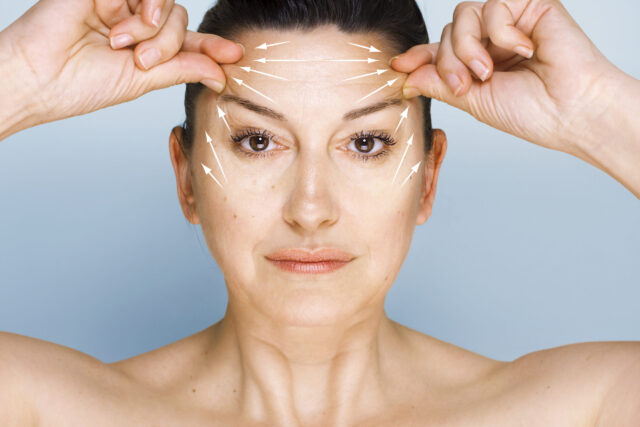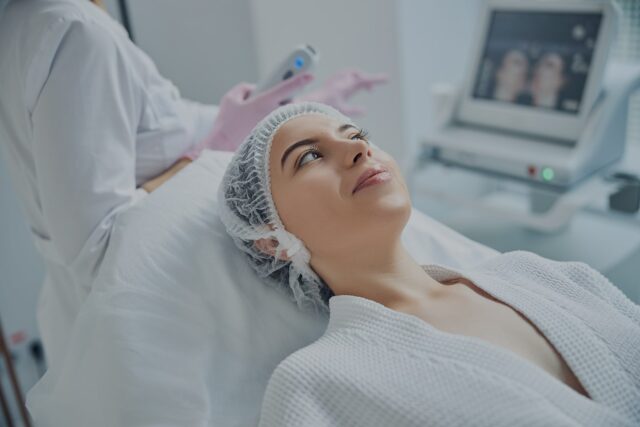
If you’re considering a brow lift procedure, there’s a lot to know before you take the plunge. Read on to learn more about the process and tips for a successful outcome! We’ll explore both the pain and pleasure of this type of surgery, so you can make an informed decision. Let’s get lifting!
1. Benefits of a Brow Lift

A brow lift in London is a surgical procedure to improve the appearance of wrinkles and sagging skin in the forehead area. It can be used to enhance your overall facial appearance, reposition the eyebrows and reduce overall fatigue or droopiness in the upper eyelids. The procedure can also make a person look more refreshed and alert when combined with other cosmetic procedures such as a facelift or eyelid surgery.
The benefits of a brow lift include:
- Repositioning of sagging eyebrows that may have caused deep horizontal lines on your forehead
- Reducing furrow lines between your eyebrows
- Lifting of facial skin that may have been causing an angry, tired or sad expression
- Improving visibility by lifting hooded lids
- Removing fine wrinkles from across the forehead and around the eyes
- Enhancing other cosmetic surgery procedures such as facelifts or eyelid surgery for more dramatic results
- Strengthening the muscles between your eyes to restore their ability to contract and create expressions
2. Types of Brow Lift Procedures

When considering a brow lift procedure in London, it is important to understand the different types of procedures available. There are two primary methods used for lifting sagging eyebrows: endoscopic brow lift and direct brow lift.
Each procedure has its own specific benefit and risks, so it’s important to discuss all the options with your doctor to decide which one is right for you.
Endoscopic Brow Lift:
This type of procedure utilizes a thin, lighted tube (an endoscope) to carefully maneuver without a large incision while treating areas around the eyebrow. It is considered less invasive than other techniques and may also leave fewer visible scars from the scarring around the hairline.
Direct Brow Lift:
The direct approach requires incisions behind each eyebrow and at the top of your forehead near the hairline or scalp. It does not involve an endoscope but it does take longer for recovery due to larger incisions and more recuperation time in order for desired results to become visible. This technique can provide long lasting results if done correctly by an experienced plastic surgeon.
3. Pain Levels Associated with a Brow Lift

With modern advancements in medicine and anesthesia there are ways to reduce the amount of pain patients may experience during and after their procedure.
The grade of pain associated with it depends on the technique used for the surgery, as well as on individual patient factors. Generally speaking, most patients who undergo this type of surgery will experience moderate pain. The level of discomfort can range from slight discomforting sensations to more intense levels of pain that require medication management.
Patients should prepare for some degree of discomfort following the procedure, as tissue swelling and tightness can contribute to localized painful areas along the scalp or forehead.
This is often solved through applying cold compresses or using over-the-counter medications such as ibuprofen to minimize inflammation and tenderness in this area. Additionally, topical anesthetics prescribed by your doctor may help to reduce discomfort during recovery time.
Through these modern medical procedures and medications, most patients are able to reduce their risk for excessively painful levels during their brow lift operation and recovery period by consulting with their board-certified plastic surgeon ahead of time. In short, consulting your plastic surgeon beforehand is essential in helping you remain comfortable throughout your entire treatment plan.
4. Post-Procedure Care

Post-procedure care is important for a successful procedure. It’s important to follow your doctor’s instructions closely so you can achieve the best outcome. Your doctor may ask you to keep your head elevated for several days following the procedure and provide instructions about how to care for the incisions. You will also need to keep your face clean and avoid certain activities that could irritate or damage the incision site.
Your doctor will likely recommend avoiding strenuous activities, including exercise, heavy lifting, and any activity that puts direct pressure on the forehead or scalp area. In addition, take care when brushing or styling your hair – avoiding areas near the incision sites – and wearing hats or sunglasses until full healing has occurred.
It is common to experience some pain after surgery; however, it should lessen in a few days. Your doctor will provide pain medication if necessary. You may also have bruising and swelling around the eyes; this should improve after 2-3 weeks post procedure, but it could take longer for complete resolution of swelling in some cases.
Finally, expect follow ups with your surgeon after a brow lift where he/she will check on how you are doing with healing from the surgery and how well you like your results!
Conclusion
In conclusion, a brow lift or forehead lift can be an effective way to reduce signs of aging. However, it’s important to weigh the pros and cons of this procedure before you make your decision. Although a brow lift can provide dramatic improvements in appearance, it can also cause some temporary discomfort and side effects.
To ensure the best outcome possible, follow your doctor’s pre-and post-surgery instructions.
- If you do choose to go forward with a brow lift procedure, always make sure that you are working with an experienced and reputable surgeon who has completed a formal residency in plastic or facial surgery.
- Research your surgery options thoroughly in order to choose the most appropriate type of procedure for your individual needs and goals.
- Understanding all the risks associated with surgery as well as having realistic expectations will help ensure an optimal outcome from your treatment plan.









